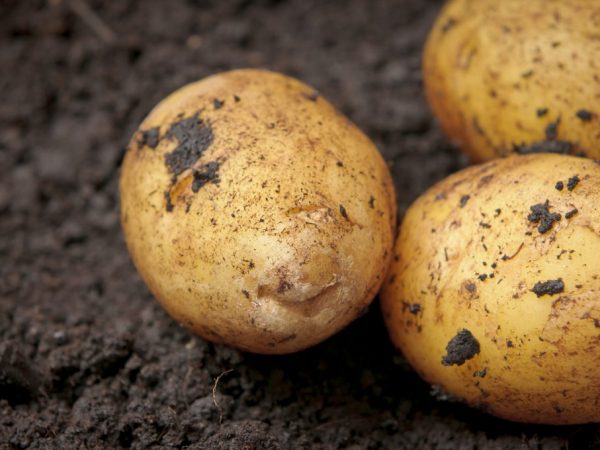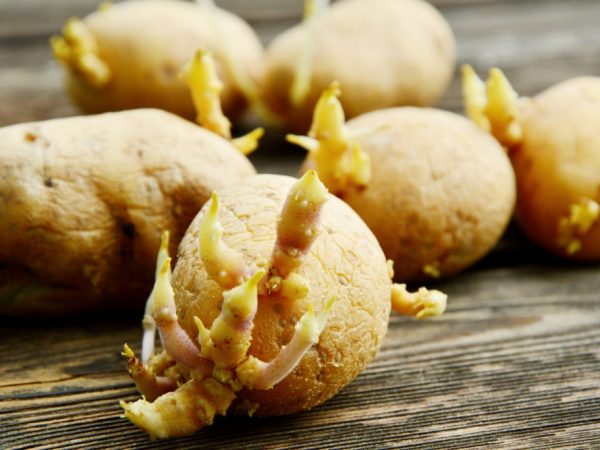Description of Arizona potatoes
Today there are a large number of potato varieties, one of which is the Arizona potato. The variety has excellent taste and beautiful appearance.

Description of Arizona potatoes
Variety characteristic
The Arizona potato variety was bred in 2013 and entered in the State Register for the Central and Central Black Earth Regions. The variety is medium early, table, characterized by a yield of 225-408 c / ha. The maximum rate is up to 577 c / ha. The ripening period is 70-80 days.
Description of the plant
According to the description, the bush is medium, leaf type. Stems are straight, spreading. The leaves are green, large.
During the ripening period, the plant produces large corollas.
The root system is well developed.
Root description
The weight of one fruit is 112-150 g. Potatoes are oval, have small eyes. The skin is yellow. The pulp is light yellow. The potatoes contain starch in the range of 13-16%, so the fruits are not very boiled and look neat when cooked.
Keeping quality of fruits is within 95%. Good taste.
Benefits of the variety
Gardeners distinguish a number of positive characteristics of the variety:
- resistance to potato crayfish and golden nematode;
- keeping quality;
- good presentation;
- good taste;
- transportability;
- long storage.
Preparing for landing
The tubers are prepared before planting: they are germinated in a few weeks. The planting material is taken out into a bright and warm room so that the fruits begin to sprout. Also, before planting, potatoes are sprayed with a growth stimulant: this helps to increase yields.
The tubers should be beautiful and healthy in appearance, without damage. Damaged fruits must be discarded immediately, because they impair the formation of root crops. The soil in which the vegetable is planted should not be acidic, so wood ash is added to it. The landing site should be well lit. For Arizona, a place where various herbs or onions, cabbage used to grow.
Planting methods for tubers

Tubers are treated from pests before planting
Planting begins in early or mid-May, when the ground is warmed up to a temperature of at least 12 ° C. Before planting, the land is loosened, cleaned of weeds and tops. On the day of planting, the soil is treated with potassium permanganate, and the fruits themselves are treated with pest control agents.
To increase the yield, the soil is mixed with peat and humus. The hole should be 10 cm deep, the row spacing should be 30 cm, and the row width should be 70 cm.
Care rules
Potatoes are unpretentious in their care, but several mandatory rules must be followed. Gardeners recommend the following procedures:
- form high beds.
- watering only in hot weather conditions;
- the soil is mulched to keep moisture longer;
- the plant is fed during the period of root crop formation; for this they take potassium and phosphorus, but nitrogen substances are not used;
- 1 week before harvest, the tops are cut: this way the root crops receive more moisture and nutrients;
- the harvested crop is given time to dry, and only then the potatoes are removed to the cellar for storage.
Possible diseases and pests
The Arizona potato species has a strong immunity to potato crayfish and golden nematode, but is susceptible to late blight. It attacks stems and roots. To prevent disease, the soil is loosened from time to time and the amount of watering is reduced.
Also, germination of tubers before planting and treatment with a growth stimulant helps to protect the crop from late blight.
Conclusion
The Arizona potato variety has become especially popular in the central part of Russia. The vegetable is undemanding to care for, so even beginners can grow it.
The fruit tastes amazing and is suitable for many dishes. Potatoes boil well and hold their shape.


